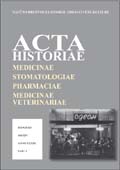Pešačko kretanje u funkcji unapređenja javnog gradskog prostora i javnog zdravlja u Beogradu
Pedestrian movement in function of improvement of urban public spaces and public health in Belgrade
Author(s): Milena Vukmirović, Jelena VukmirovićSubject(s): Architecture, Health and medicine and law
Published by: Naučno društvo za istoriju zdravstvene kulture
Keywords: walking; moderate physical activity; pedestrian environment; rendundent artefacts; Belgrade
Summary/Abstract: Human scale in focus of urban planning and design has as an objective to encourage the incense of walking as an integrated urban policy aimed at developing a lively, safe, sustainable and healthy cities. The e creation of healthy city is increased by pedestrian movement and cycling, which becomes a natural part of everyday patterns in urban activity. This is also the way of reducing public health issues since the majority of urban population has become sedentary. These objectives can be achieved by increased concern for the human dimension in urban planning and design, reflected in different requirements for quality life in a city. The above-stated reflects the level of social investment (particularly in the area of health care and transportation infrastructure) because the price of implementing the human dimension turned out to be low, so the investment in this area is considered to be possible for all the cities in all parts of the world, regardless of their developmental status and financial power. Walking and pedestrian space was analysed from two aspects - medical and physical (spatial). The focus of the medical aspect is in determining the importance of walking as a moderate physical activity on human health and the ways in which pedestrian environment directly affects the mood of a pedestrian. From the physical point of view the elements of the pedestrian environment are analysed on the spatial-analytic level of detail, as redundant artefacts of pedestrian area. The objective of these analyses is to determine the general recommendations with regard to improving the quality of open public spaces as direct pedestrian environment, which may result in increased intensity of walking observed as moderate physical activity. The research polygon covers the network of pedestrian spaces in the Belgrade city centre, which is considered as the most intensively used pedestrian area of the city.
Journal: Acta historiae medicinae, stomatologiae, pharmaciae, medicinae veterinariae
- Issue Year: 2014
- Issue No: 33
- Page Range: 46-73
- Page Count: 28
- Language: Serbian

